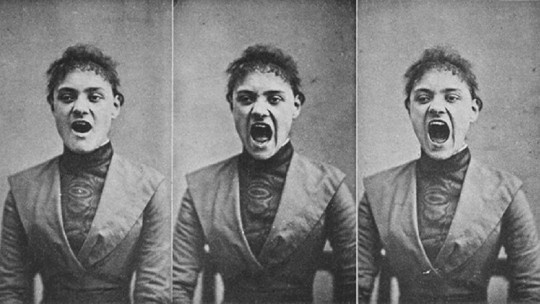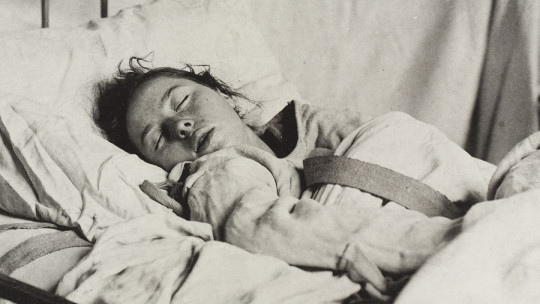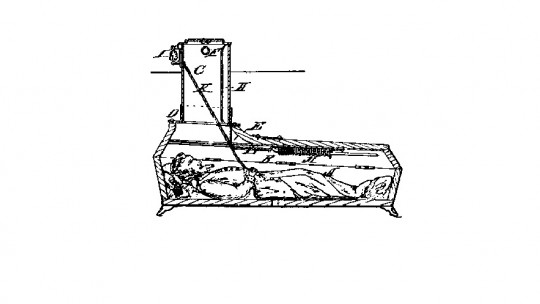Under the term hysteria there is a disorder that is difficult to define, whose symptoms appear without the person needing to suffer any type of organic condition that justifies them. In these cases, it is conjectured that the disease finds its cause in a psychological conflict to be resolved, which converts the person’s discomfort into physical symptoms, hence it is also known as conversion disorder.
However, This diagnosis did not always work in the same way Since ancient times, hysteria was considered a disease specific to women, which could manifest itself through any type of symptom and was caused by great sexual repression.
What is hysteria?
The diagnosis of hysteria is what is currently known as conversion disorder which is located within the classification of neuroses and can be suffered by both women and men.
But this was not always so. Throughout the history of psychiatry, the diagnosis of hysteria was reserved for women, who They were treated through an intervention known as “pelvic massage.” ”. This treatment consisted of manual stimulation of the woman’s intimate area, by the clinician, until she reached orgasm.
The science of the time theorized that women became ill with hysteria due to a repressed sexual desire, and that upon reaching this orgasmic state, which they called “hysterical paroxysm,” the symptoms of hysteria gradually subsided.
These hysteria-related symptoms included from physical symptoms such as headaches, muscle spasms or fluid retention to psychological symptoms such as insomnia, irritability or, what they called “propensity to cause problems.”
Another relevant fact in the history of hysteria is that, thanks to this type of disorder, the well-known psychiatrist Sigmund Freud understood that something existed beyond consciousness itself. Following the study of hysteria, Freud determined the existence of the unconscious, theorizing that the cause of said disorder was the repression of a traumatic event which manifested itself through crises that appeared without any type of explanation.
First diagnoses of hysteria
Although the diagnosis and study of hysteria reached its peak in the Victorian era, there are records of diagnoses of hysteria from much earlier times.
Hysteria can be found described in ancient Egyptian archives, and both Plato and Hippocrates already described it at the time. During ancient Greece, hypotheses about hysteria were based on a myth according to which the female uterus is capable of traveling through any part of the body causing all kinds of diseases.
This myth is what gives rise to the term hysteria, since the root of this has its origin in the Greek word hystera, used anciently to refer to the uterus.
If we go a little further forward in time, the famous doctor Galen described hysteria as a condition caused by sexual deficiency in women with passionate tendencies; and vaginal massages were already recommended as a healing procedure.
The rise of hysteria in the Victorian era
Given the number of symptoms that the Victorian medical community attributed to hysteria, it became the default diagnosis for virtually any condition, no matter how mild, that a woman felt.
During that time, one in four women was diagnosed with hysteria, and the list of symptoms exceeded 75 pages in some manuals. The majority belief was that the pace of life of the time acted as a precipitating factor for women to suffer from this disease.
Another element that facilitated the large number of diagnoses of hysteria was its easy treatment. Vaginal massages were a safe treatment, since it was impossible for the patient to get worse or die as a result of the intervention, something very common in the Victorian health system.
The main drawback of this treatment was that it had to be carried out periodically and constantly. Furthermore, the techniques used to stimulate the woman were tiring for the doctor, since this It could take a long time for the woman to reach the “hysterical paroxysm.” with the consequent physical fatigue that this meant for both him and the patient.
As a remedy to this problem, there was the invention of a device created to facilitate this task. This apparatus It consisted of a kind of mechanical vibrator, which was placed over the woman’s intimate area; thus giving rise, and without anyone in the scientific community suspecting it, to the current sex toys.
Although in the beginning such devices could only be found in doctors’ and psychiatrists’ offices, with the passage of time and thanks to the spread of electricity, vibrators reached practically all homes, with the purpose of allowing women They could perform the treatment themselves from the comfort and privacy of their home
It is curious that, although the cause of hysteria was determined to be a lack of sexual activity or satisfaction, the medical community flatly rejected the idea of the vibrator as an object with a sexual purpose. Purpose that, with the passage of time, is what has been granted to it.
The end of this type of diagnosis
However, the fame and advantages of the diagnosis of hysteria were not enough for it to persist over time. The advancement of studies in psychology led to a greater understanding of the human mind, which is why hysteria was considered a conversion disorder, which has much more specific symptoms and can occur in both men and women.
Therefore, during the first years of the 20th century the diagnosis of hysteria decreased considerably. Also in part because the medical community itself accepted that it was impossible to maintain a diagnosis within which any type of possible symptom could fit
Finally, although the term continues to be used today as another way of referring to conversion disorder, its diagnosis according to Victorian-era guidelines is completely eradicated.










